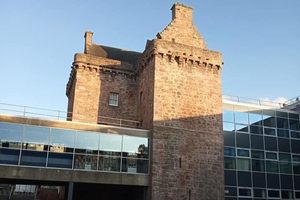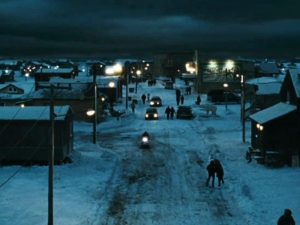
Scotland is home to between 2,000 and 4,000 castles. The vast discrepancy in the margins is due to the fact that some are just crumbling ruins, while others make the assertion to sound more grandiose than they are in reality. Still, a few thousand are either popular tourist attractions or stately homes passed down through the generations. The city of Edinburgh lays claim to an impressive number of nearly a dozen of these legitimate fortresses.
The vast majority of visitors are quite familiar with Edinburgh Castle, which resides on the remains of an extinct volcano in the center of the capital. However, many are unaware of Merchiston Tower, near the westerly suburb of Bruntsfield. Here lie the remnants of a 15th-century castle now home to one of the capital’s universities.
Constructed sometime around the 1450s for the Clan of Napier, this was the ancestral home of John Napier (1550-1617), the 8th Laird of Merchiston and inventor of logarithms. Like its kin, the aforementioned Edinburgh Castle, the tower was besieged many times. During the 1960s, a cannonball was discovered embedded in one of the walls. It was attributed to a battle between the supporters of Mary, Queen of Scotts and her son James VI.
Over the following years, it was passed down through many hands. Edinburgh City Council acquired ownership of the property in the mid-1930s. In the late 1950s, it became the new home of Edinburgh Napier University. Though many of the ancient rooms have been retrofitted to accommodate the modern institution, there is one particular chamber that is extremely unique.
In the great hall, visitors will find a painted wooden ceiling that hails from the late 1500s. This ornate decoration was originally constructed for the Preston Grange House, now home to a golf course a few miles east of the capital. The timber beams are meant to depict the flowering of the court of James VI and reflect caricatures found in Germanic folktales. However, the scenes were deemed a bit too racy and scandalous for the upper gentry, and they were relocated here.



